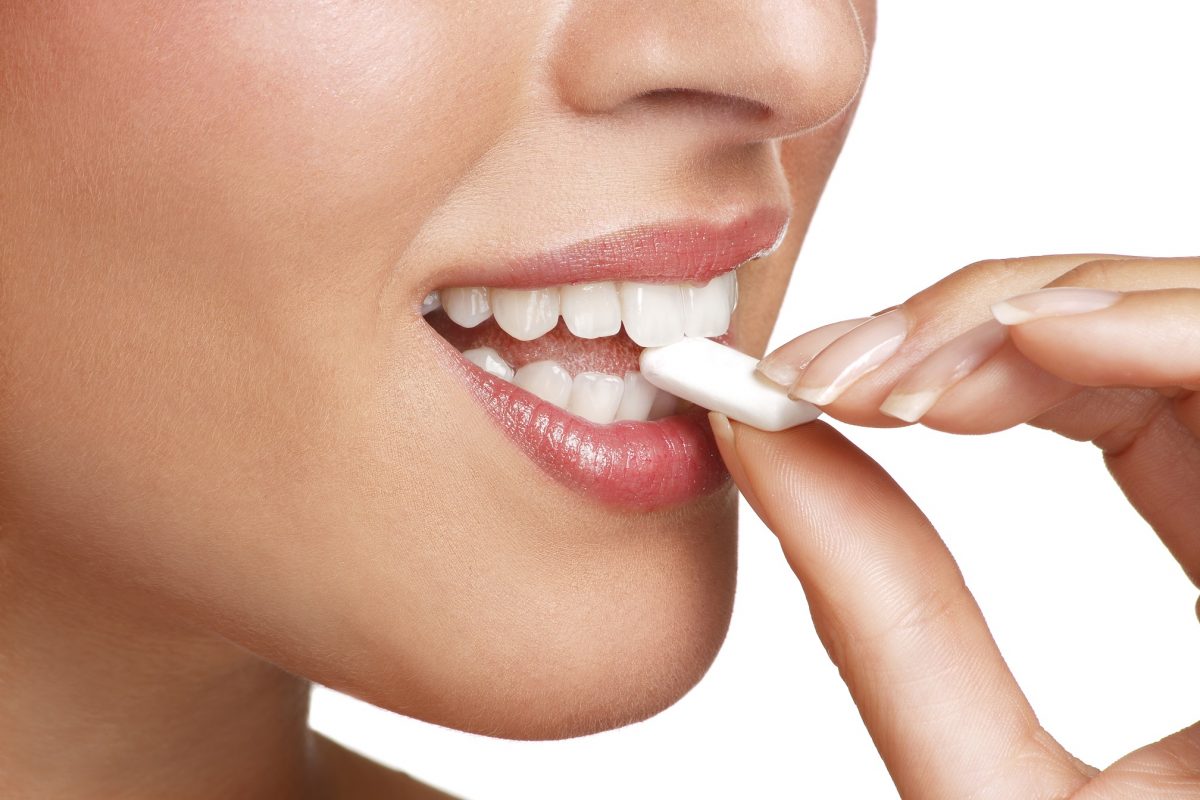Author: admin
Infected Tooth Pain- Do I Need An Extraction? Litchfield MN
It is normal to have bacteria in your mouth covering the teeth, tongue, and other oral tissues. However, tooth infections can occur when bacteria penetrates the exterior of your tooth (enamel and dentin), and reaches the tooth pulp, or settles in deep gum pockets where it can’t be reached with regular brushing.
Poor dental hygiene, tooth injury, and dental procedures can lead to cavities and fractures that trap bacteria and allow plaque to build up. Although these injuries are usually not painful, the tooth should be filled or crowned promptly to stop bacteria from eroding the tooth any further. If left untreated and the infection reaches the pulp, a condition known as pulpitis may result, causing you to experience a toothache or sensitivity that is aggravated by hot and cold liquids and foods. If the infection continues to spread through the tooth, it may form a pocket of pus known as an abscess.
Treatment options for tooth infections
If you have pulpitis, your dentist may recommend root canal therapy to remove the infection and preserve your natural tooth. Since the tooth will be weakened after the procedure, it will need to be crowned or capped to restore its strength and stability.
Once an abscess forms, the pus has to be drained to treat the tooth. If the tooth can’t be saved with root canal therapy, it may have to be extracted. Pus removal can occur before or after the extraction. If your dentist finds that extracting the tooth before treatment may allow the infection to spread and cause other complications, such as compromising the healing process after tooth extraction, then your dentist may recommend treating the infection before tooth removal to reduce these risks.
Generally, you will need to take pain medication and some antibiotics for a few days before your surgical tooth removal to remove bacteria in the area, as well as after tooth extraction to prevent infection when healing.
If you’re experiencing the symptoms of a tooth infection, please visit your dentist as soon as possible to save the tooth or schedule an extraction.
What are the Benefits of Tooth Colored Fillings? Litchfield MN
Tooth colored filling is a common dental treatment used to fill cavities or restore decayed and damaged teeth. It requires the dentist to choose a filling material that has the same shade as your natural teeth when filling the cavity. This allows you to discreetly repair your teeth and restore them to their full form and function, while enhancing the beauty of your smile.
Here are some reasons to get white, tooth-colored fillings:
- They provide a strong and durable material that can help restore decayed teeth, repair chipped teeth, and close unsightly gaps between your teeth.
- They look natural compared to your own teeth. This is because the filling material is matched to your natural tooth color and then bonded directly to the tooth, giving you a restoration that is both discrete and understated.
- The procedure is short and takes about an hour, so you don’t have to miss a full-day of work to repair your teeth. That said, the actual time taken to get the white fillings depends on different factors, including the cavity size, its location, and the number of fillings required.
Are White, Tooth Colored Fillings Right for you?
To determine whether white tooth colored filling is right for you, it is important that you consider your dental treatment requirements. This will require you to visit your dentist for a thorough examination of the damaged or decayed tooth, followed by customization of the tooth-colored fillings to match your enamel so it blends in when you smile. Please call our office to book your consultation appointment.
Contact Us Today!
White tooth colored filling remains an excellent option to restore your teeth because of the numerous benefits it offers. If you still have more questions about white tooth colored filling, contact our dental practice today. Our dentists will be available to discuss with you and provide suitable answers to your questions and concerns.
Affordable Family Dentist, Litchfield MN
As an affordable dental practice near you, our aim is to put a smile on as many faces as we can. From the moment you arrive at our doorstep, our friendly and compassionate team will look after you, ensuring that your experience outstanding customer service and access to the highest quality of dental care within your budget – all in a relaxed atmosphere.
Choice of Treatments
Getting affordable dental care across the spectrum is important to help you save costs on taking care of your dental health and oral hygiene. We provide a full range of dental treatments, including dental hygiene, general family dental care, restorative dentistry, cosmetic dentistry, emergency care, and so on, allowing your entire family to receive their dental care under one roof. This means that you can book your appointments at the same time to save on time and money that would be spent moving between different practices. That said, each treatment plan is individually tailored around every patient’s needs, so you receive the level of care that is best suited to your needs.
Innovative Treatment Options
We boast a range of state-of-the-art dental equipment that allows us to provide you with innovative treatment options that are customized to address your specific needs to your satisfaction. This has offered our clients several benefits, including:
- The ability to identify possible dental problems in their earliest stages and introduce simple and low-cost interventions in time
- Design of complete treatment plans for serious problems to restore the optimal function and aesthetic of your mouth
- Providing a comfortable experience
- Focus on minimal intrusion and maximum preservation of your natural tooth
- Faster healing and quick recovery time
- Long-lasting dental work
Call Us Today for Affordable Dental Services
When in search of an affordable dentist, consider our practice. We are dedicated to providing exceptional dental care and high-quality services without compromise. We will help keep your bright smile and offer excellent dental care. From dental exams to routine teeth cleanings, teeth whitening, and other dental procedures, we offer quality treatments at an affordable price.
Call our office today to discuss possible payment plans and financing options.
Types of Professional Teeth Whitening Options, Litchfield MN
People can tell a lot from the shade of your teeth, including your age, state of oral health, and even your good and bad habits. And since everyone wants to look young and well groomed, teeth whitening has become one of the most popular cosmetic procedures in dentistry.
Advancements in teeth cleaning technologies have made the treatment more comfortable, predictable, long-lasting, and affordable for all people. Although there are many effective ways to whiten your teeth, they vary depending on the treatment time and frequency, type of stain that can be removed, and the level of whitening that can be achieved.
Some of the teeth whitening options available include:
Professionally applied bleaching:
With in office tooth whitening, the dentist applies a low concentration of hydrogen peroxide (bleach) to the surface of your teeth using trays that fit snugly around your top and bottom teeth. After the in-office treatment, your dentist may give you some hydrogen peroxide gel and custom-made trays to continue your treatment at home for a specific period of time to maximize the teeth bleaching results
Dentist-prescribed treatment:
Your dentist will give you a custom-made whitening kit for home use. This kit includes custom-made trays and some hydrogen peroxide gel. Teeth whitening at home is a gradual process that usually takes at least two weeks.
Which is the best option?
It’s best to consult a dentist for a thorough examination of your teeth so your treatment can be tailored to your unique needs. During your first appointment for professional teeth cleaning, your dentist will examine your teeth carefully, review your oral health history, and then determine whether bleaching is right for you. Please visit your dentist today to discuss your teeth whitening goals and smile concerns.
Natural Looking Fillings for Front Teeth in Litchfield MN
If you’re suffering from cavities, your dentist may recommend that you get tooth colored fillings to restore its size, shape, and even shade. Tooth colored fillings are designed to not only repair decayed or damaged teeth, but also help you improve your smile and restore your confidence. As such, they are particularly suitable for repairing front teeth, and can help treat cavities or decays affecting your lower and upper front teeth.
Steps for getting tooth-colored fillings
Step 1: Consultation appointment
If you think that you’re a suitable candidate for tooth-colored fillings, because of a chipped, cracked, fractured, or decayed tooth, then your first step should be visiting a dentist for proper diagnosis and design of your custom treatment plan. The dentist will examine the issue with your teeth and recommend the right dental procedure. If a tooth colored filling is right for you, the dentist will use the latest techniques and state-of-the-art dental equipment to repair the tooth.
Step 2: Local anesthetic application
The tooth filling will be carried out on your next visit in a single appointment. The dentist will start by applying a local anesthetic to make you feel comfortable and ensure that the procedure is pain-free.
Step 3: Cleaning the tooth
Next, the dentist will remove any cavities, bacteria, plaque, and all signs of tooth decay, sterilize the tooth and the surrounding areas, and apply a bonding agent.
Step 4: Choosing the right shade of tooth-colored material
The dentist will select a shade of tooth-colored filling matching your teeth’s natural color and carefully place it on the tooth structure.
Step 5: Filling and fine-tuning
The dentist will use a special curing light to harden the material in-between the teeth layers. After filling the cavities completely, the dentist will smoothen and polish the tooth-colored filling to achieve a flawless outcome. You can start chewing with your fillings immediately after the procedure is completed.
Contact Us to Schedule a Dental Appointment
If you would like to know whether tooth colored filling for front teeth is right for you, contact our dental practice today to schedule an appointment. Our friendly, professional dental specialists will be happy to meet with you.
Tooth Abscess Treatment Near Me, Litchfield MN
An abscessed or infected tooth is a dental problem caused by bacteria penetrating through your tooth enamel and dentin to reach the pulp (pulpitis), such that pus begins to collect within. It can also occur when bacteria gets trapped in deep gum pockets. This results in a number of unpleasant symptoms, including:
- Throbbing pain in the tooth
- Pain in the surrounding areas, such as the ear, lower jaw, and neck
- Soreness of infected tooth and surrounding area when biting
- Pain in the teeth when consuming hot or cold foods and drinks
- Bad taste in your mouth
- Fever and general feeling of being unwell
- Difficulty opening your mouth and swallowing
Types of tooth abscesses
If you suspect that you have a tooth infection, you should visit your dentist immediately for diagnosis and/or emergency treatment. Your dentist may discover one of two types of tooth infections:
- Periapical abscess – It is the most common type of tooth infection. It happens when you have a hole in the tooth enamel, which allows bacteria to enter and make its way to the pulp. The bacteria infects the pulp and spreads to the bone surrounding the tooth, causing a pocket of pus to form at the tip of the tooth root
- Periodontal abscess – This type of abscess is the result of untreated gum disease. The infected gum tissue becomes inflamed and begins to move away from the bottom of your tooth. This creates a gap that is difficult to clean, allowing bacteria to build up. Ultimately, a pocket of pus forms at the side of the tooth root to form a periodontal abscess.
Treatment options
Cases of dental abscess are treated by draining the pus and resolving the infection by removing the damaged tissue from the pulp. Additional remedies may include:
- Over-the-counter medication to help with the pain
- Antibiotics to stop the spread of the infection
- Root canal therapy and then capped with a dental crown to strengthen it
- Tooth extraction and replacement with a partial denture, bridgework, or dental implant.
Please visit your dentist for proper diagnosis and treatment.
How to Find a Reliable Dentist Near Me, Litchfield MN
When it comes to finding the right dental practice for your family, you need to choose a team that is dedicated to providing excellent and top-class dental services and solutions. One that is committed to helping you and your family achieve an outstanding level of dental hygiene and oral health for the long-term.
Here are some considerations to help you find a reliable dentist near you:
- Dentist who’s qualified and experienced in performing various dental services, including cosmetic dentistry, general dentistry, dental treatments, dental cleanings and exams, and other common procedures.
- Wide range of dental services offered under one roof such as general dentistry, cleanings, veneers, crowns & bridges, among other dental procedures.
- Friendly, compassionate, and diligent team that will thoroughly investigate your case and perform the most suitable dental procedure that will provide a lasting solution to your dental issues.
- Excellent and prompt dental services, whereby dental procedures are performed using the latest techniques and state-of-the-art dental equipment to ensure maximum comfort and fast healing.
- A comfortable and serene environment that is suitable for all your family members
First Appointment at a Dental Practice Near Me
In case you are in search of the best dentist near me, call our dental practice today to schedule a one-on-one consultation with our qualified dentist. At our dental practice, we understand that every patient is unique and requires specific dental needs. With this in mind, we offer personalized and quality dental care for your entire family. When you visit our dental practice, you can expect:
Our experienced team will be available to speak with you and help you understand your possible dental treatment options. We will recommend a dental procedure or solution that works best for you. When you need the best dentist near you for dental cleaning, treatment, or procedures, our dental practice remains the ideal place to visit. Our ability to deliver excellent and compassionate dental services makes us the preferred option for individuals and families looking for a reliable dentist in their area.
What to Expect During Teeth Whitening Treatment | Litchfield MN
Your smile may gradually lose its sparkle regardless of how thorough your oral hygiene routine is. Although brushing and flossing your teeth every day and scheduling professional teeth cleaning visits can help to prevent stains, factors such as ageing, smoking, and consuming wine, tea, coffee, and other colored foods and drinks can contribute to the yellowing or discoloration of your teeth.
Tooth whitening provides you with a way to improve the color of your teeth and ultimately enhance your smile. This requires you to consult a dentist to design a personalized treatment plan that is based on the current shade of your teeth and the desired outcome. Professional teeth whitening in the dentist’s office is the most common bleaching method, and is usually accomplished using hydrogen peroxide or another bleaching agent.
The treatment is performed by a team member during the first appointment, and then under one’s supervision for subsequent treatments to ensure safety and effectiveness of the treatment.
The procedure involves:
- Placing a rubber shield or some gel to protect your gums
- Applying the bleaching agent on your teeth using some trays that fit snugly like a mouthguard
- Leaving the trays on to activate the bleaching ingredient and break it down into oxygen that penetrates tooth enamel to change the shade of your teeth
- A laser may be used to speed up the breakdown for faster results. This requires application of a higher concentration of the bleaching agent without using the trays, and then using laser technology to activate it. This improves the color of your teeth by 5-6 shades.
After your whitening treatment, the effects can last for a long period of time if you practice proper oral hygiene. Please visit your dentist to learn more about teeth whitening options that may work for you.
Causes of Toothaches and Possible Dental Treatments | Litchfield MN
Toothaches are usually the result of tooth trauma or a dental condition, such as a cracked tooth, dental cavity, advanced gum disease, an exposed tooth root, or disorders of the jaw joint (temporomandibular joint). The severity of the pain can be mild, sharp, or excruciating, and can vary in occurrence, from periodic to chronic.
Causes of tooth pain
The most common cause of tooth pain is dental caries. Dental cavities refer to holes that form in the two outer layers of a tooth (tooth enamel and dentin), when you don’t brush your teeth properly, allowing acid in the mouth to erode the tooth. If the cavities are small and shallow, you may not experience any pain. But as they get larger and deeper towards the inner living tooth tissue (pulp), you will start experiencing severe pain when the pulp gets irritated by bacterial toxins or liquids that are cold, hot, sour, or sweet.
Other causes of tooth pain include:
- Dental abscess – Severe pulp injury and subsequent tooth infection
- Periodontal disease – bone loss and formation of deep gum pockets that cause gum infection and pain
- Tooth root sensitivities
- Impacted tooth
- Temporomandibular joint (TMJ) disorders – caused by arthritis, jaw injury from impact or recent dental work, or jaw muscle fatigue from habitually clenching and grinding teeth
Treatment for tooth pain
Depending on the diagnosis, your dentist may recommend the following treatments for a toothache:
- Over-the-counter pain relief medication
- Extraction of an impacted tooth
- Topical fluoride application for minor tooth sensitivities
- Dental filling for small and shallow cavities
- Dental crown for larger cavities
- Root canal therapy for cases that involve an injured pulp or infection,
- Tooth extraction of infected tooth followed by tooth replacement
- Cases involving advanced gum disease may require thorough cleaning, as well as scaling and root planing, combined with improved oral hygiene practices.
It’s important that you visit a dentist for a thorough examination to diagnose the cause of the pain and recommend an appropriate long-term treatment.
Tooth Colored Fillings In My Area | Litchfield MN
Tooth colored fillings, refer to dental filling materials made from composite or plastic, which are designed to match the color of your teeth. They provide you with a discreet way to repair damaged or decayed teeth, since tooth colored fillings blend with the teeth’ natural appearance and surrounding structure.
This means that tooth-colored fillings are personalized dental restorations that are tailored to not only repair your damaged or decayed teeth, but also match the color of existing natural teeth. Your dentist may recommend composite resin fillings for the following reasons:
- As a treatment for cavities.
- To restore fractured or chipped front and back teeth where aesthetics is a concern since they maintain the natural appearance of your teeth.
- To restore your beautiful smile and allow you to smile with confidence, since the filling material blends seamlessly with the surrounding teeth and is virtually unnoticeable
- To maximize the strength of a repaired tooth by minimizing the amount of healthy tooth structure removed during the filling process.
- To maximize the longevity of the restored tooth, since the material is resistant to expansion and contraction. This reduces the risk of fractures compared to metal fillings
- To help you achieve a whiter smile, since tooth colored fillings are not at risk of discoloration, especially when considering tooth whitening in the near future
Schedule a Consultation Today!
Tooth-colored fillings can help restore the full function of your mouth and improve your smile. Our dentist can offer you custom-shaded fillings that will match the color of your surrounding teeth. Our experienced dentist will take you through the details of everything involved in the tooth colored fillings procedure. With this, we can help restore the natural appearance of your teeth.
Contact our dental practice today to find out more about tooth-colored filling dental procedure and enjoy the benefits of a beautiful smile. Our dentist will be happy to meet with you and discuss your dental options.

6 Month Smiles
Six Month Smiles is a short term orthodontic treatment that involves wearing clear braces to straighten and improve tooth alignment. This alternative treatment is a convenient approach to a straighter smile without the time commitment.
Learn more









